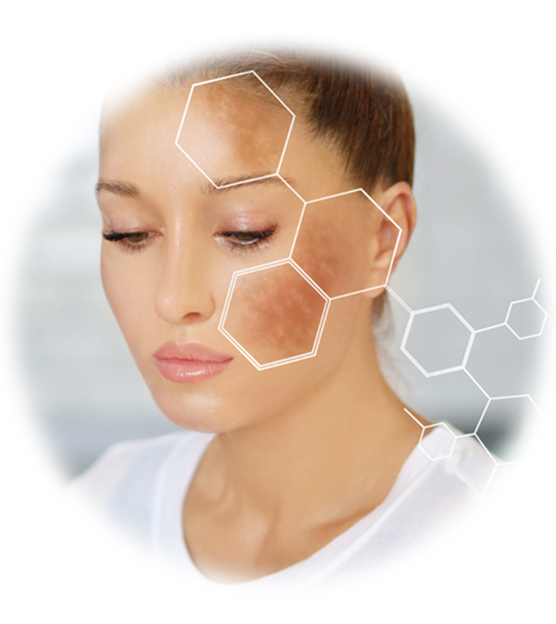Hyperpigmentation
Hyperpigmentation can cause a person to feel utterly conscious of their appearance. It is usually identified by the production of dark spots or patches. The body secretes extra melanin and gives skin color. Regardless, it protects the skin from harmful UV rays but these dark patches inadvertently make the person conscious.
These dark patches could be restricted to a small area of your body, like your hands or face, or cover wider areas. By and large, hyperpigmentation isn’t dangerous or infectious.
Hyperpigmentation is normal among grown-ups, and there are various causes, including:
- Sun exposure
- Response to a disease or a condition, like Cushing’s sickness
- Rashes
- Hormonal changes
- Blue light from screens and electronic gadgets
Melasma
The most well-known sort of hyperpigmentation is called melasma. It appears as unpredictable patches of tan, brown, or brown-dim pigmentation, normally on the face. Melasma is more normal in women than in men due to hormonal changes, and it happens frequently during pregnancy. Other normal triggers incorporate sun exposure and prescriptions like oral contraceptives.
At the point when hyperpigmentation initially shows up, it’s vital to see a skin doctor for a conclusive consultation as your side effects could be brought about by other skin conditions. Dr. Neetu Narula at HM Aesthetics, Chandigarh gives a thorough analysis and prescribes a course of action or treatment that focuses on diminishing the development of hyperpigmentation and eliminating areas of overabundance pigmentation that, as of now, have shown up. Generally speaking, you ought to see hyperpigmentation treatment as a long-term solution, not a run. It can require weeks or months to accomplish results.
Here are a few options that our skin specialist suggests for hyperpigmentation-
Chemical Peel
A chemical peel uses acids in potent concentrations to treat the essential part of the skin. It reduces the chances of hyperpigmentation by removing the top layer of your skin called your epidermis. The wider type can also examine the middle layer of your skin to produce more significant results. Although there are many chemical peels available, you may want to consider getting a professional-grade peel done at your cosmetologist’s office.
Laser Skin Resurfacing
Laser peel skin resurfacing therapy uses focused beams of light to reduce hyperpigmentation . There are two types of lasers: ablative and non-ablative.
Ablative lasers are the most intense and involve removing layers of your skin. Non-ablative procedures, on the other hand, target the dermis to stimulate collagen growth and have tightening effects. Both of these destroy the elements in your skin to ensure that new skin cells grow back tighter and more toned.
